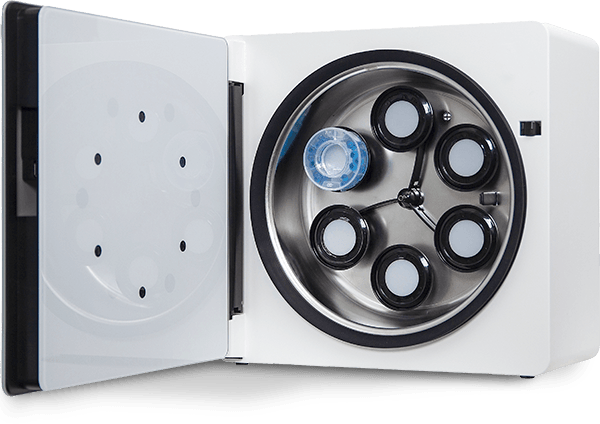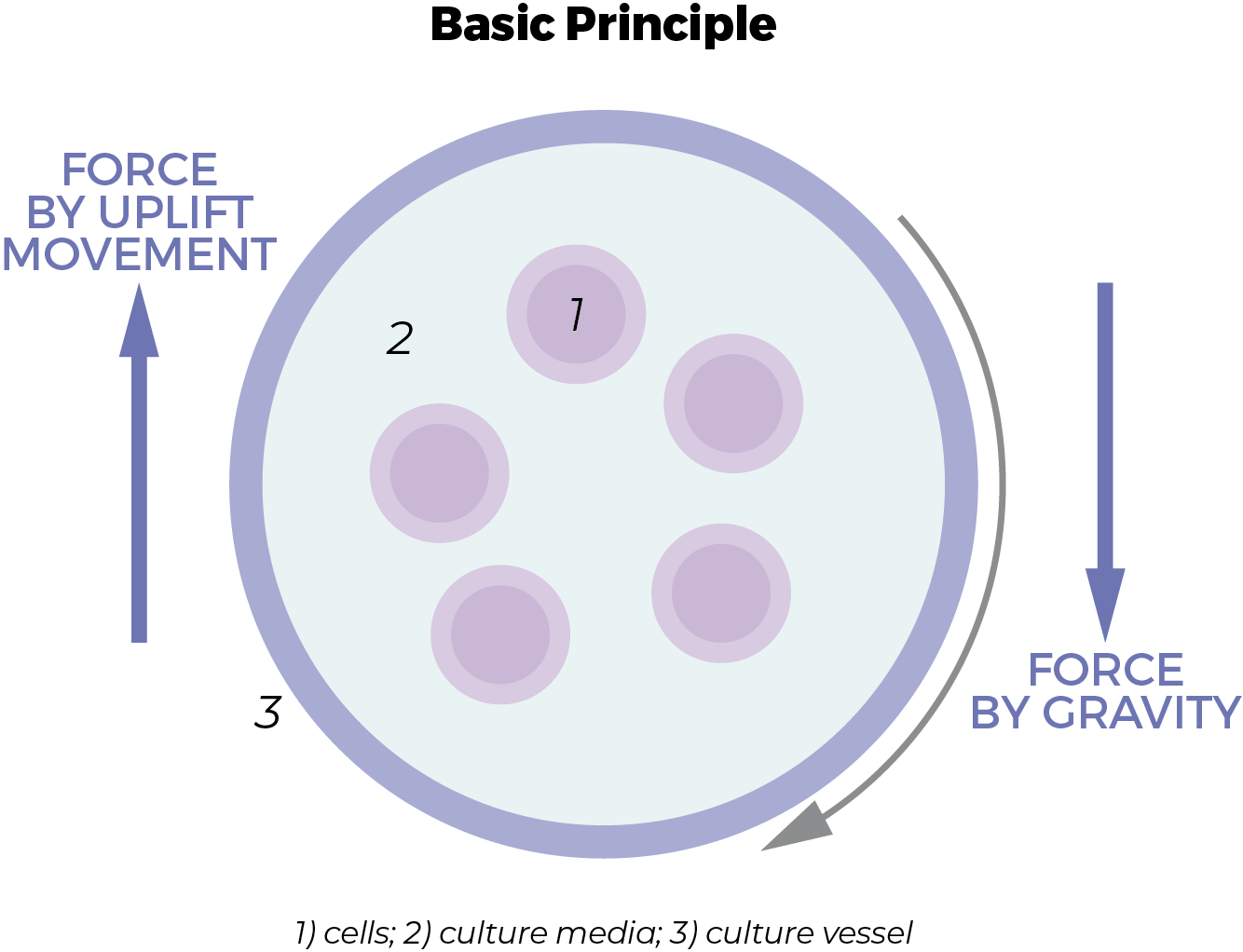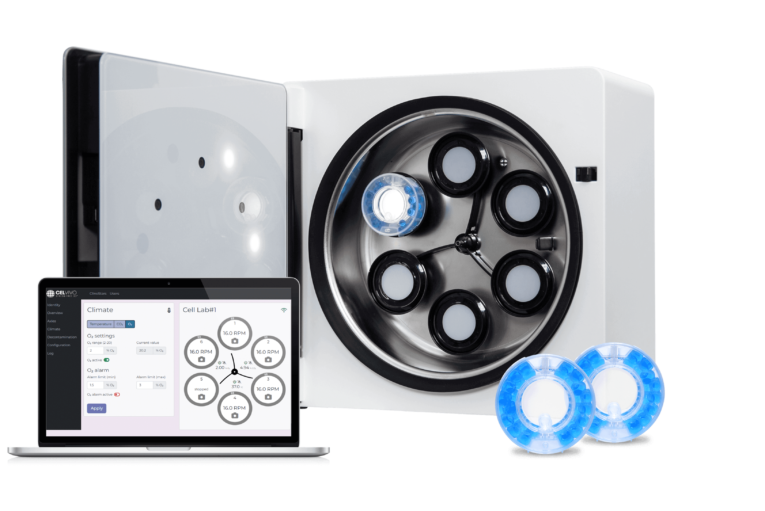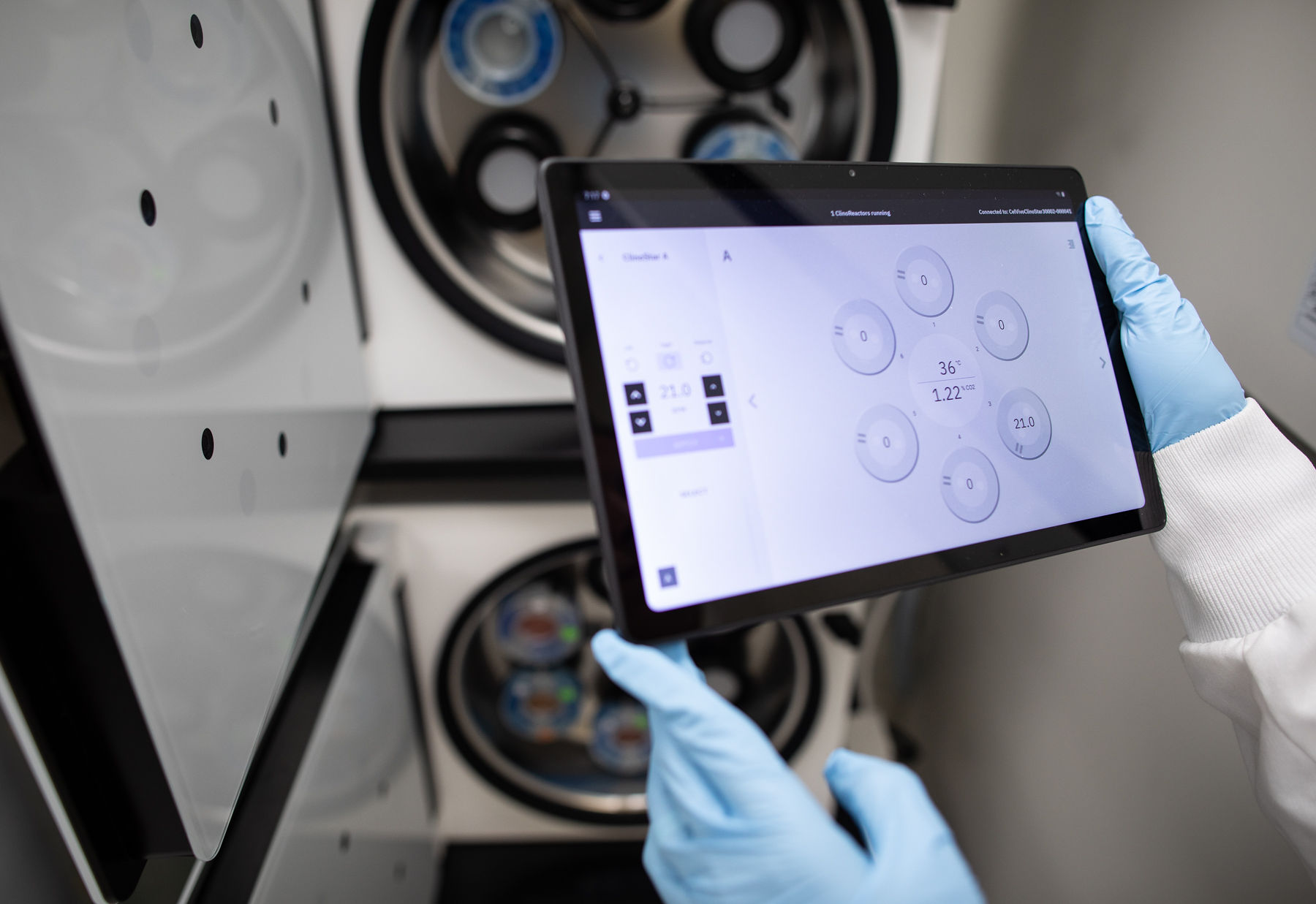Latest publications

Co-development of mesoderm and endoderm enables organotypic vascularization in lung and gut organoids
The vasculature and mesenchyme exhibit distinct organ-specific characteristics adapted to local physiological needs, shaped by microenvironmental and cell-cell interactions from early development. To recapitulate this entire process, we co-differentiated mesoderm and endoderm within the same spheroid to vascularize lung and intestinal organoids from induced pluripotent stem cells (iPSCs).
The most user friendly system for working with organoids yet.
In close collaboration with scientists, we aim to innovate 3D cell culture research, pushing the frontiers of in vitro models by solving the bias of active diffusion and no shear stress.
This means that cells can present a physiological performance similar to what is seen in vivo and the re-establishment of intercellular communication, whether they are spheroids, organoids, or other aggregates. Sounds advanced? Don’t worry it’s even more user friendly.

Watch how the ClinoStar works
Application Areas
The ClinoStar 3D cell culture technology is made for scientists who cultivate and mature cells.
The technology can be used across several application areas and allows the generation of uniform, reproducible, and functional spheroids and organoids. These spheroids mimic the function, structure, and architecture of in vivo cells. The technology thus lets you perform research using cell models with an unprecedented correlation between in vivo and in vitro conditions and closes the gap between 2D cell culture and cell function.
See how it works on the application areas below.
Developmental Biology
Read new publications about how blastoids grown in a 3D cell culture environment can create in vitro models of blastocysts.
Liver
Watch exclusive webinars and interviews, and learn how other scientists work with long-term liver cell cultures in the ClinoStar system.
Neuroscience
See how other scientists have used the ClinoStar system for growing brain organoids in a 3D environment and how to get started yourself.
Oncology
Immersive yourself in insights about working with tumoroids in 3D and how other scientist uses the ClinoStar for oncological research.
The CelVivo Technology
The ClinoStar technology is developed to mimic in vivo performance with low sheer stress, allowing scientists to generate in vitro models that closely resemble real-world conditions. Thus creating more accurate, reproducible research and experiments – without animal use.

What our users say about us

Christophe Deben
Doc. Assistant Center for Oncological Research, University of Antwerpen
“Expanding Organoids for drug screening has always been a time-consuming and labor-intensive process.
We are astonished by how much faster organoids grow in the ClinoStar and by the ease of use for maintaining long-term cultures”.

Professor Stine Falsing Pedersen
Department of Biology, University of Copenhagen
“Organoids derived from murine cancer models or patient tumors are valuable tools for precision medicine and drug development, however, the standard culture method is expensive, time-consuming and low-throughput.
We use the CelVivo ClinoStar system to grow spheroids and organoids”.

Marcus Krüger, Dr. rer. Nat.
Otto Von Guericke University, Magdeburg
“With the new ClinoStar, we are able to maintain long-term 3D cell cultures that are used not only for tissue engineering approaches but also to study the complex processes that allow cancer cells to survive as a metastasis.
This is critical for exploring new therapies to destroy cancer cells with metastatic properties”.

Professor Madhu Dhar
College of Veterinary Medicine, The University of Tennessee Knoxville
“We are using the ClinoStar to culture primary neurospheres with the goal of adding endothelial and mesenchymal stromal cells to produce neural organoids for in vivo application in the regeneration and repair of peripheral nerve injuries”.

Professor Jay Gopalakrishnan
Institute of Human Genetics, Heinrich Heine Universität, Düsseldorf
“Our laboratory is known for dissecting principles of human brain development and decoding disease mechanisms using iPSC-derived brain organoids.
With the ClinoStar, we have been able to generate human brain organoids in a reproducible, easy, and abundant manner with relatively less effort”.
NEWSLETTER
Keep in touch
Make sure you never miss a message.
Sign up for CelVivo’s monthly newsletter and get all the latest ClinoStar research, 3D cell culture trends, insightful symposiums, and exclusive webinars.
Support
Do you need support with your ClinoStar? Do you have any questions regarding applications or protocols? Visit our support site to get answers to our frequently asked questions or contact a CelVivo employee.
Start optimising your In Vitro models today


